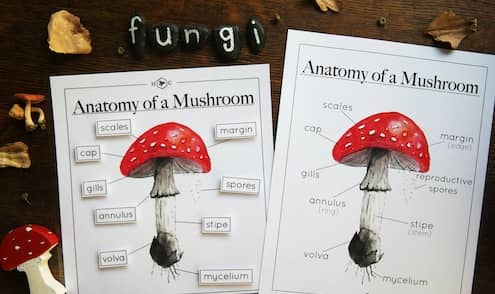As experts in the world of mushroom anatomy and cultivation, we understand the importance of knowing the various parts that make up this amazing organism. From the fruiting body to the mycelium, each component plays a critical role in the life cycle and function of the mushroom.
In this article, we will delve into the anatomy of mushrooms, providing detailed information about each part, how they function, and their importance in the world of fungi.
Fruiting Body (Real Mushroom)
The fruiting body, also known as the mushroom cap, is the most recognizable part of the mushroom. It is the reproductive structure that produces spores, which are necessary for the propagation of the mushroom species. The cap is typically round or oval-shaped, with a stem that attaches it to the mycelium. Underneath the cap, there are gills or pores, where the spores are produced and released.
Stipe
The stipe, or stem, is the structure that supports the cap of the mushroom. It is typically cylindrical in shape, and its length, thickness, and texture can vary greatly between species. The stipe is also the site where the mycelium and fruiting body connect, allowing nutrients to flow from one to the other.
Mycelium
The mycelium is the vegetative part of the mushroom, consisting of a mass of thread-like structures called hyphae. These hyphae grow through the substrate, breaking down organic matter and absorbing nutrients. The mycelium can be found underground, within logs, or even in compost. It is the source of nutrients and energy for the entire mushroom organism.
Veil
The veil is a thin layer of tissue that covers the gills or pores on the underside of the cap in young mushrooms. As the fruiting body matures, the veil will either break apart or remain attached, depending on the species.
Ring
The ring, also known as the annulus, is a structure that encircles the stipe of some mushroom species. It is often formed from remnants of the veil and serves to protect the developing gills or pores from damage. In some species, the ring will decay and disappear as the mushroom matures.
Gills
Gills are the thin, blade-like structures found on the underside of the cap of some mushroom species. They are the site where spores are produced and released, and their color can vary greatly between species. Some mushrooms have pores instead of gills, which serve the same function.
Pores
Pores are the small, round holes found on the underside of the cap of some mushroom species. They are the site where spores are produced and released and are often more common in polypore mushrooms than gilled mushrooms.
Understanding the anatomy of mushrooms is crucial for anyone interested in cultivating or studying these fascinating organisms. Each part of the mushroom plays a critical role in its life cycle and function, from the fruiting body to the mycelium. By delving deeper into the intricacies of mushroom anatomy, we can gain a greater appreciation for the complex and mysterious world of fungi.







